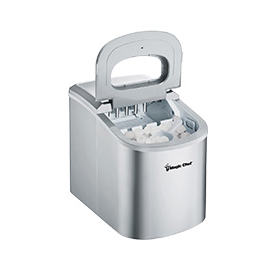Understanding Chemical Paint Composition, Applications, and Safety
Chemical paint, often referred to simply as paint, is a versatile material that has revolutionized the way we finish and protect surfaces. It plays a critical role not only in aesthetics but also in providing a barrier against environmental damage, ensuring longevity and durability of various substrates. This article delves into the composition, applications, and safety considerations surrounding chemical paints.
Composition of Chemical Paints
At its core, chemical paint is composed of four main components pigments, binders, solvents, and additives
.1. Pigments These are the coloring agents in the paint and are responsible for providing opacity and vibrancy. Pigments can be organic or inorganic, and their selection often depends on desired properties like lightfastness and UV resistance.
2. Binders Binders are the films that hold the pigment particles together and ensure that the paint adheres to the surface. Common binders include acrylics, polyurethanes, and oils. The choice of binder affects the paint's finish, durability, and whether it is suitable for interior or exterior applications.
3. Solvents Solvents are used to dissolve the binder and disperse the pigments. They control the viscosity of the paint and help in the application process. Water is a common solvent in water-based paints, while oil-based paints use organic solvents such as mineral spirits.
4. Additives These are included in small amounts to enhance specific properties of the paint, such as drying time, flow, and resistance to mildew and corrosion. Additives can make a significant difference in the performance characteristics of the paint.
Applications of Chemical Paints
Chemical paints are used in a wide array of applications, from residential and commercial buildings to industrial machinery and vehicles.
chemical paint

- Architectural Coatings Paint is used extensively in homes and offices to protect surfaces and provide aesthetic appeal. Different formulations are available for interior and exterior applications, with specific paint types designed to withstand moisture, sunlight, and temperature fluctuations.
- Automotive Finishing The automotive industry relies heavily on chemical paints for vehicles. These paints must provide excellent adhesion, durability, and resistance to various environmental factors such as UV light and chemicals. The modern auto body shop utilizes advanced paint technologies to ensure optimal finishes.
- Protective Coatings In industrial settings, chemical paints are formulated to offer high levels of protection for machinery and structures. Protective paints defend against corrosion, chemical exposure, and wear, extending the lifespan of equipment and infrastructure.
Safety Considerations
While chemical paints provide numerous benefits, safety is a significant aspect that cannot be overlooked. Many paints contain volatile organic compounds (VOCs), which can be harmful to human health and the environment.
- Ventilation It is critical to work in well-ventilated areas when using these paints. Poor ventilation can lead to the accumulation of harmful fumes, which can cause respiratory issues and other health problems.
- Personal Protective Equipment (PPE) Using appropriate PPE, such as gloves, masks, and goggles, can protect workers from harmful substances found in some paint formulations.
- Disposal and Regulations Understanding local regulations regarding paint disposal is essential. Many areas have strict guidelines to prevent environmental contamination from chemical paints.
In conclusion, chemical paints are an integral part of various industries and applications, contributing significantly to aesthetics and protection. By understanding their composition, applications, and safety measures, we can better appreciate their value while ensuring a safe and environmentally friendly approach to their use.
-
Rdp Powder: Key Considerations for Wholesalers in the Building Materials IndustryNewsJul.08,2025
-
Key Considerations for Wholesalers: Navigating the World of Hpmc - Based ProductsNewsJul.08,2025
-
Hpmc Detergent: Key Considerations for WholesalersNewsJul.08,2025
-
Key Considerations for Wholesalers: China Hpmc For Tile Adhesive, Coating Additives, Concrete Additives, and MoreNewsJul.08,2025
-
Crucial Considerations for Wholesalers: Navigating the World of Construction MaterialsNewsJul.08,2025
-
Key Considerations for Wholesalers Sourcing Additive For Cement, Additive For Concrete, Additive For Putty from Additive Manufacturer Shijiazhuang Gaocheng District Yongfeng Cellulose Co., Ltd.NewsJul.08,2025




